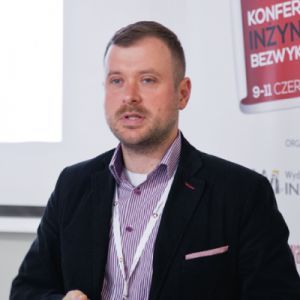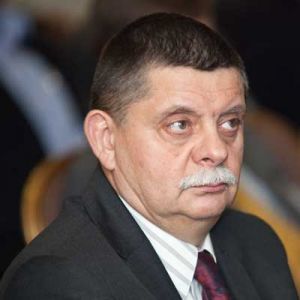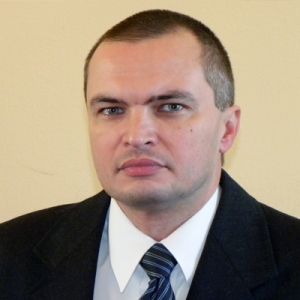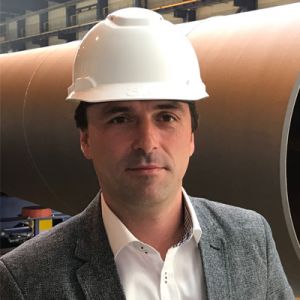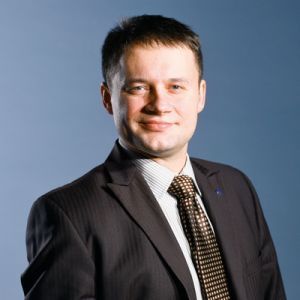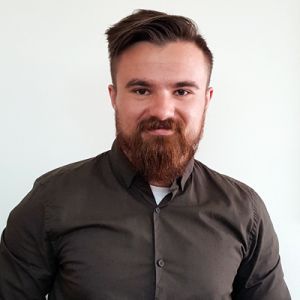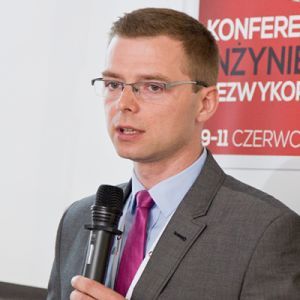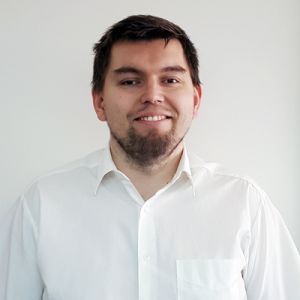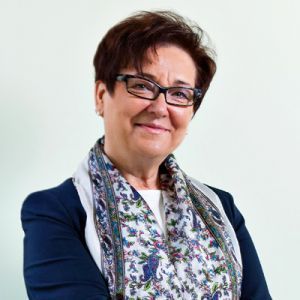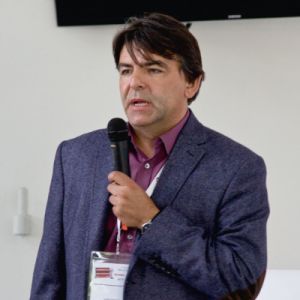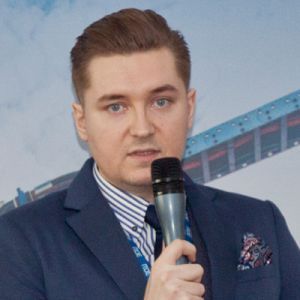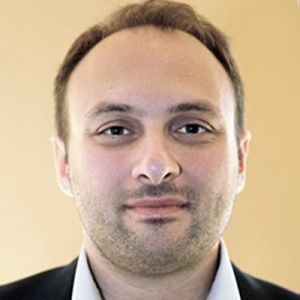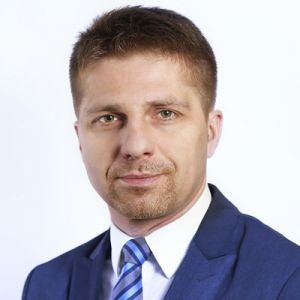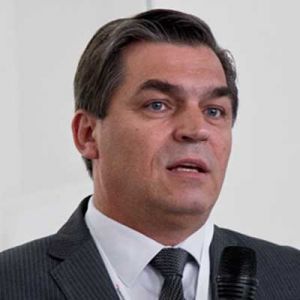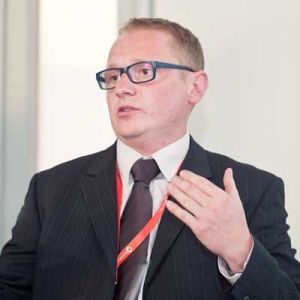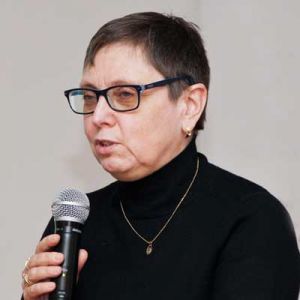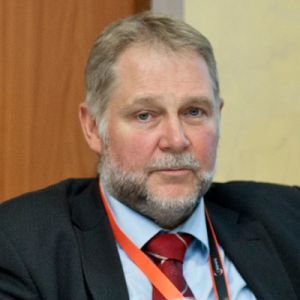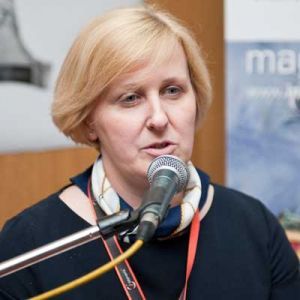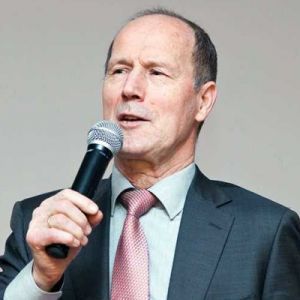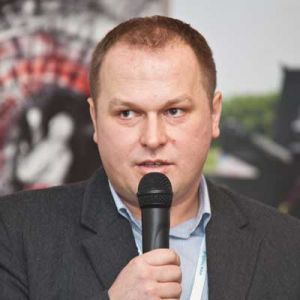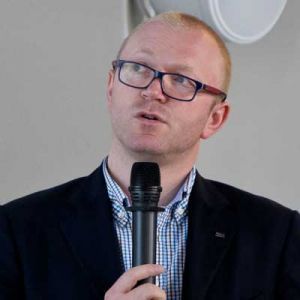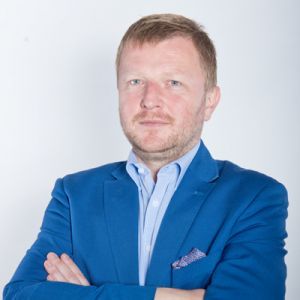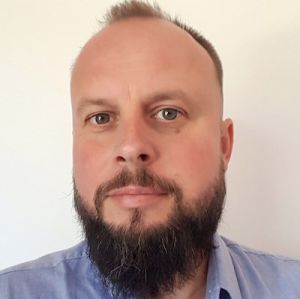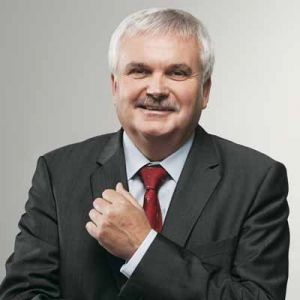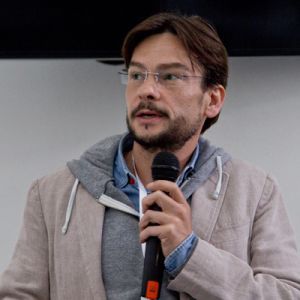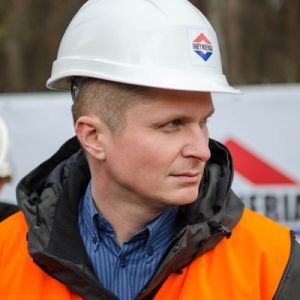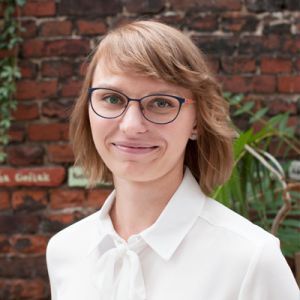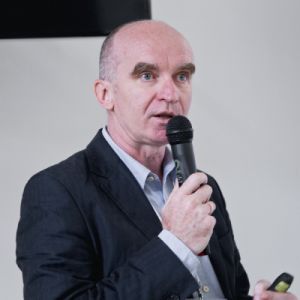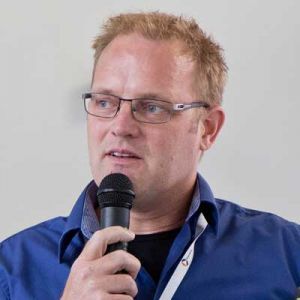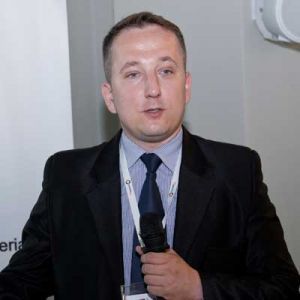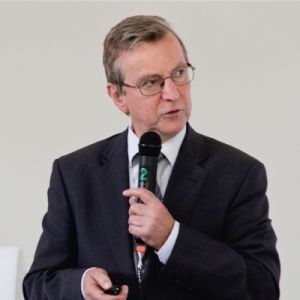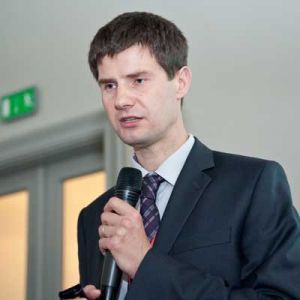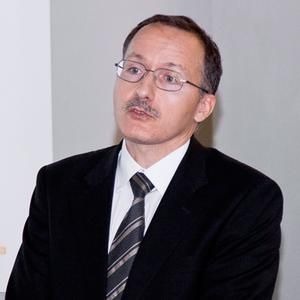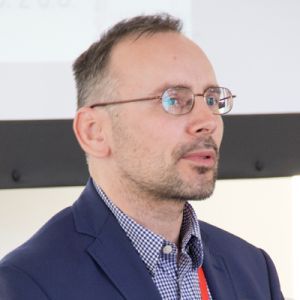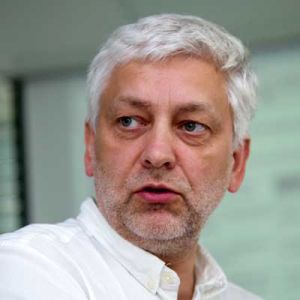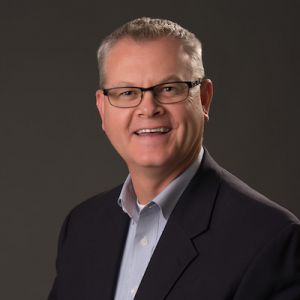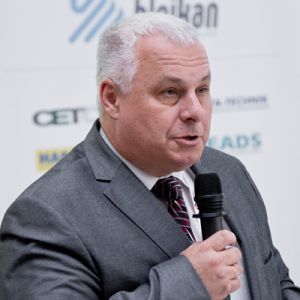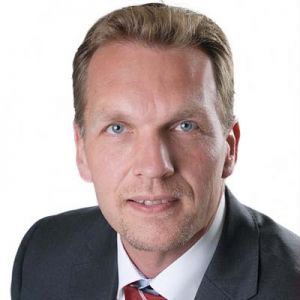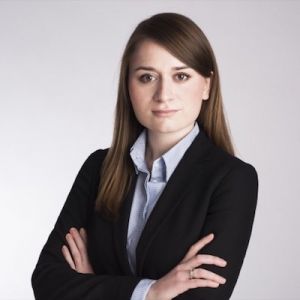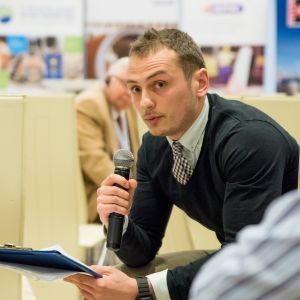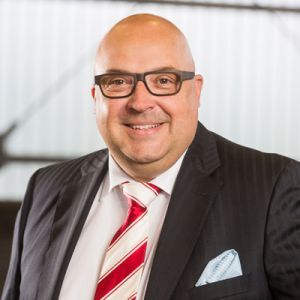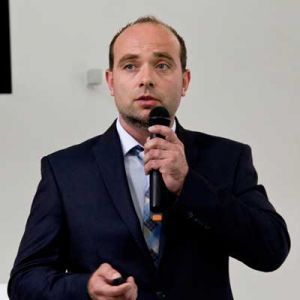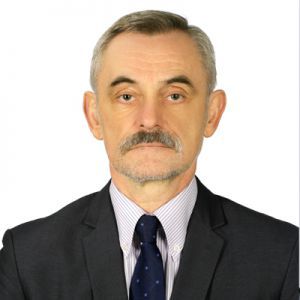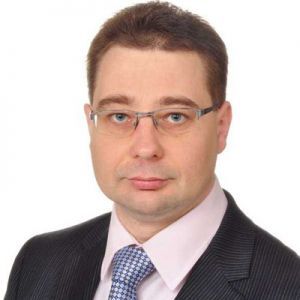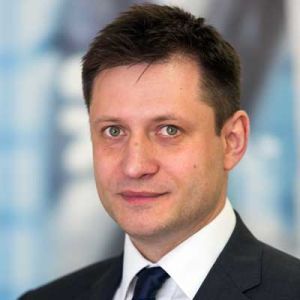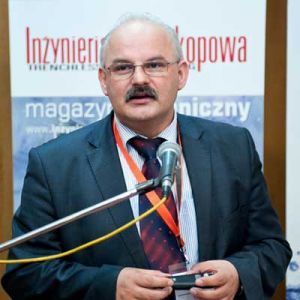Speakers
We look forward to application of topics and abstracts. Please send them to the following e-mail: This email address is being protected from spambots. You need JavaScript enabled to view it.
Workshops: Selected issues concerning the design of the pipeline rehabilitation liners in reference to the DWA-A 143-2 guideline
The goal of the workshops is to discuss the basic rules of designing pipeline rehabilitation liners in reference to the DWA-A 143-2 guideline and the audit work issues.
Discussed topics will include:
• assessment of the existing pipeline,
• rehabilitaion methods in reference with the assessement outcome,
• input data for the design and the load imposed on the liner,
• imperfection problem, technical state III and IIIa,
• determination of the internal forces and dimensioning for operation and mounting,
• calculation scheme
• quality of work assessment
During the lecture there will be discussed rules of liners dimensioning in reference to the DWA-A 143-2 guideline.
dr inŇľ. Tomasz Abel, Wroclaw University of Technology
WrocŇāaw University of Technology graduate. In 2011 he defended his PhD thesis on the durability characteristics of pipelines undergoing trenchless rehabilitation. Currently an academic teacher and researcher, an active participant in scientific conferences in the field of underground construction.
Specialist in the field of trenchless construction and renovation of pipelines. His has built his knowled was built through many years of scientific research and experience gained in construction. The author and the co-author of many scientific and technical publications as well as expertises and construction projects in the field of underground transport infrastructure, including those implemented by WrocŇāaw University of Technology. He cooperates with domestic and foreign contractors and participates in many workshops that enable him to improve his professional skills.
Sewerage tightness measurements - the theory and the reality
During the presentation covering the theoretical and practical aspects of sewerage tightness measurements, there will be a tightness measurement of a short pipe DN150 performed. Also the basic requirements of the PN-EN 1610 standard will be discussed, as well as the causes and the consequences of not performing the tightness measurements. By this show the speaker aims to present how simple and fast this operation is.
MichaŇā Andrzejewski, Gamm-Bud sp. z o.o.
West Pomeranian University of Technology Szczecin graduate. Company owner since 1986. In 1992 appointed as Managing Director Gamm-Bud, which is a supplier of telecommunication and water and sewage equipment.. He is the author of more than 50 publications in the trade press and the co-author of the book "Methods of laying telecommunication cables in underground urban infrastructure". Moreover, he is a constructor of fiber optic cable blowing machines and sewer repair systems.
Mechanical properties of laminate coatings and their effectiveness as an anti-corrosion layer for HDD cables
During the presentation, the properties of laminate coatings that protect pipes installed by the HDD method will be presented. The following will be discussed: the effectiveness of such protection in the context of corrosivity, the mechanical strength, the results of qualitative tests of coatings. The speaker will also point out operational errors that may affect the quality of the coatings and the consequences of these errors.
Adam Bok, Proma sp. z o.o.
Plans and experiences of Gas Transmission Operator GAZ-SYSTEM S.A. in the field of trenchless construction of the crossings in gas transmission pipelines
There will be presented a plan of implementation of the trenchless crossings that will be conducted in 2017-2019: the initiation, design and implementation. Presentation will be based on the experience gained while constructing a gas pipeline DN 1000 Wierzchowice-Czeszów. It was a project that involved using the Direct Pipe method.
MaŇāgorzata BuŇāaŇõ, Gas Transmission Operator GAZ-SYSTEM S.A.
Cracow University of Technology and SGH Warsaw School of Economics graduate, GAZ-SYSTEM S.A. Investments Division employee. An expert in the fields high pressure gas transportation pipelines and industrial installations in chemical and petrochemical industry.Her acquired knowledge is supported by 15 years of experience in the implementation of the strategic gas pipeline projects in Poland.
Experiences acquired during the DN1000 gas pipelines HDD and Direct Pipe installation
In 2016 the drilling company PPI CHROBOK S.A. executed the first drilling for a gas pipeline with a diameter of 40" in Poland. HDD technology and innovative Direct Pipe technology have been used to carry out the pipe implementation. During the presentation the experiences concerning those drillings will be discussed and the technical comparative analysis of the aforementioned technologies will be presented.
Marcin Firkowski, PPI CHROBOK S.A.
Trenchless renovation of pressure pipes: the PW-LINER usage
Sealing of the pressure pipes is the strategic element of the network management in the water and sewage industry. Water losses caused by the poor technical conditions of the pipelines pose a serious organizational and economic challenge, therefore the rigorous planning of the pressure pipes renovation is very important. MC-Bauchemie proposes an effective renovation system based on CIPP technology: Konudur PW-LINER.
Adam Gonera, MC-Bauchemie sp. z o.o.
WrocŇāaw University of Technology graduate. He specialized in technical chemistry. Since 2006, he has been associated with MC-Bauchemie in Infrastructure & Industry - the repairs of reinforced concrete structures in the specialty of trenchless restoration of underground infrastructure. He has been working as the Product Manager Ombran since 2015.
Experiences acquired during the DN1000 gas pipelines HDD and Direct Pipe installation
In 2016 the drilling company PPI CHROBOK S.A. executed the first drilling for a gas pipeline with a diameter of 40" in Poland. HDD technology and innovative Direct Pipe technology have been used to carry out the pipe implementation. During the presentation the experiences concerning those drillings will be discussed and the technical comparative analysis of the aforementioned technologies will be presented.
Jakub Hilarowicz, PPI CHROBOK S.A.
Do we need slurry and technological supervision? man and technological supervision? If so, when do we need it?
The recent development of HDD directional drilling technology has increased the scale of projects. Both, the distances at which we work and the pipeline diameters have increased. We also already execute projects in geological conditions that were inaccessible for HDD. Does the companies‘ challenge awareness keep up the pace with the technological acceleration and allow the works to be executed independently without the slurry supervision?
Jacek Jaworski, HEADS sp. z o.o.
AGH University of Science and Technology graduate. He specializes in drilling technology, especially in drilling fluids. He is also professionally interested in multilayered aluminosilicates modification, especially bentonites. Author of numerous articles in the trade press, papers and expert reports on HDD, vertical drilling and geoengineering.
Unglazed clay jacking pipes Naylor Drainage LTD ‚Äď non-standard parameters and the Polish and international appliance examples
During the presentation the technical parameters and non-standard clay pipes testing will be discussed. The speaker will also present the examples of unglazed clay pipes appliance in Poland and worldwide.
Krzysztof Kaczmarek, Naylor Polska
Poznan University of Technology graduate. In water supply and sewage industry for 15 years. Since 2007 he professionally deals solely with the clay pipes. Currently employed at Sweillem Ceramic Polska sp. z o.o. ‚Äď NAYLOR LTD. retailer.
QRA (Quantitive Risk Assessment) methods in drilling projects risk management
The author indicates some of the quantitative risk assessment methods which are currently used in the broadly understood risk management process. The methodological processes of assessing the techniques in question and the benefits of identifying and evaluating the level of risk will be presented. In addition, all aspects discussed will be matching to the specific nature of the drilling industry, particularly in the implementation of directional drilling projects. Nevertheless, the presented mechanisms will also apply in the implementation of related projects.
Kamil Kasprzak, ROE
Graduate of the Department of Drilling, Oil and Gas AGH in Cracow and the Faculty of Economics, University of Agriculture in Cracow. He has gained experience on numerous internships, as: National Mineral Resources University - Gornyj Institute St. Petersburg, PGNiG JasŇāo, GreenGas DPB Paskov, Energy Research Center Vysoka Skola Banska in Ostrava. Co-author of the development of hydraulic fracturing technology to eliminate the gas hazard for KGHM Polska MiedŇļ S.A in the scope of configuration and selection of equipment and drilling tools. He started drilling practice in 2012 as Specialist in Injection, Rotary and Percussion Drilling. He has continuously gained his experience in several leading drilling companies, including as a R&D Drilling Technology Manager. He has been working for Robert Osikowicz Engineering (ROE) since 2016. Few of his interest includes: statistical modeling of drilling phenomena, quantitative methods of risk assessment, influence of geological conditions on drilling projects, mechanics of impact of drilling tools on rock, working environment of drilling string, occurrence of overburden hydraulic fracturing.
Risk concerning rehabilitation of closed sewers wth internal diameter bigger than 1 m
In the last few years there have been executed some substantial rehabilitation project that concerned sewers with diameters bigger then 1 m. Those kind of sewers are used not only for drainage, but also for the retention. That is why most valuable rehabilitation solutions in this case are those methods which do not result in a pipe diameter reduction – and that would be the CIPP or construction chemicals usage. Both of the solutions are risky and demand thoroughness.
dr inŇľ. Andrzej Kolonko, Wroclaw University of Technology
WrocŇāaw University of Technology graduate. He specializes in the urban infrastructure and actively promotes modern trenchless technologies. For many years he has been the organizing secretary of the international science and technology conference. "Underground infrastructure of cities". WrocŇāaw University of Technology academic teacher and researcher. He cooperates with foreign scientific centres and companies. He is the author and co-author of numerous publications in national and international magazines including: "Constructions of Sewerage Ducts", "Microtunneling" and "Renovation of water pipes by cementing". In addition, he is the author and the co-author of three patents and a utility model.
Advanced composite solutions for the structural rehabilitation of pipelines
During the presentation the advanced composite solutions for the structural rehabilitation of pipelines will be discussed alongside with the special features of the renovation system and the installation requirements. There will be also proposed some examples of the solutions for the executions that involve the non-standard channels.
Christoforos Kolyvas, Insituform Linings
National Technical University of Athens (Greece), Delft University of Technology (the Netherlands) and University of Patras (Greece) graduate. Since 2016, Engineering Manager EMEA at Fyfe/Fibrwrap, formerly Technical Director at Fyfe Europe and Researcher at Delta Marine Consultants. His professional interests are, among others: structural strengthening design (also for special structures) and durability design. Active supporter of FRP (fibre-reinforced plastic) applicators and quality control of FRP applications.
The response to the emerging needs of the market related to the reducing pipeline construction and maintenance costs – Hobas Top Performance Pipes
During the presentation, the technical and economic aspects of the Top Performance pipes appliance (new HOBAS product) will be discussed. The speaker will present the ideas of their usage in the trenchless renovation and in the construction of retention tanks and the unattended sewers with retention function.
Dariusz Kosiorowski, HOBAS System Polska sp. z o.o.
International Hobas Group expert, a specialist in the field of jacking and microtunneling technology. „Top Performance” pipes and trenchless application products Project Manager. He took part in designing and executing the biggest jacking projects in Poland (OD3000, length of 7 km, OD3270, length of 3 km). Formerly employed at a concrete protection and repair technology company.
Plans and experiences of Gas Transmission Operator GAZ-SYSTEM S.A. in the field of trenchless construction of the crossings in gas transmission pipelines
There will be presented a plan of implementation of the trenchless crossings that will be conducted in 2017-2019: the initiation, design and implementation. Presentation will be based on the experience gained while constructing a gas pipeline DN 1000 Wierzchowice-Czeszów. It was a project that involved using the Direct Pipe method.
Roland KoŇõka, Gas Transmission Operator GAZ-SYSTEM S.A.
An expert in the fields of gas production and transportation, investment projects management and quality management. His acquired knowledge is supported by 20 years of experience in the implementation of the most strategic gas pipeline projects in Poland. For about 10 years tied to mining and drilling industry within the scope of the exploration and production of hydrocarbon reserves and mineral deposits. Currently he implements the trenchless technologies into the pipeline construction; organizes and supervises the process from the beginning to the end.
Application of the fused basalt elements in sanitary and combined sewage and water supply networks in Poland
During the presentation the usage of fused basalt linings as a part of the renovation of the sewerage network will be discussed and illustrated with the example of certain executions in Poland. Also their usage in newly built network objects will be discussed and the examples of trenchless basalt pipes installation will be presented. In addition, the presentation will cover the basaltic linings in the context of modernization of drinking water tanks and water treatment stations.
Wojciech KozŇāowski, Eutit Polska
WrocŇāaw University of Environmental and Life Sciences graduate. Since 2009 he has been running a branch of Eutit sr.r.o. (fused basalt components manufacturer) in Poland, named Eutit Polska.
Tied to the water and sewage industry since 2002; ten years later he acquired the appropriate building qualifications in the water and sewage sector.
Alternative method of trenchless pipe installation - Short Arc Pipe
One of the options in constructing tunnels, particularly in crossing under watercourses or in the densely populated areas, is the crossing into a vertical arc with small radius. Until recently it was impossible to execute a crossing underneath a watercourse with a smaller radius than the flexible radius of the gas pipe. The known technologies operating within the limits of a flexible radius are the Horizontal Directional Drilling (HDD) and the Direct Pipe. The technology called “Short Arc Pipe” enables pushing gas pipes directly without using any duct pipes and without the need for deep jacking or exit pits. Being able to push pipes into the tunnels with small radiuses means also shorter distances under the rivers, highways or other obstacles using either segment welded pipes or pre-bended pipes. All of this can be achieved chiefly as a result of a precise control of the pushed pipe. This technology was used for the first time in Slovakia, during a gas pipe crossing coming from a bridge and leading underneath a river. Using this technology a trenchless crossing was constructed with four times smaller radius than the used flexible radius of the 48’’ pipe is. “Short Arc Pipe” enables to undertake HDD and Direct Pipe crossings that were formerly not possible to execute, mostly due to the length of the drilling distances.
Marián Krńćík, Hydrotunel, s.r.o.
Engineering of the Slovak University of Technology in Bratislava graduate. Since the end of his studies since 1986 he has been professionally interested in tunneling and drilling machines. Since 1997, the founder and the owner of HYDROTUNEL, a construction company that uses trenchless technologies to execute the projects; e.g. microtunnels, collectors, waterways. The designer of several tunneling machines and the equipment for trenchless technology. Patents have been issued to some of them.
Systemic approach towards the impact of the drainage system on the neighboring infrastructure assessment
During the presentation the dangers and the problems of inadequate capacity of the urban storm water systems(designed and built in the early 20th century) will be discussed. In the systematic approach towards the urban drainage systems safety management, the identified risk is used as a measure, therefore the risk modeling process is crucial in the case of numerical safety analysis.
dr hab. inŇľ. Jadwiga Królikowska, prof. PK; Cracow University of Technology
Record crossing in HDD technology
In spring 2017 LMR Drilling GmbH has executed the record crossing in HDD technology. Drilling operations lasted for 20 days; in this period of time a 4600 m crossing was drilled. Crossings of even greater distances will be feasible in future. The feasibility to implement such works will always depend on three aspects: soil conditions, the contractor and the contract agreed between the client and the contractor.
Günter Kruse, LMR Drilling GhmH
He has a M.S. degree in Petroleum Engineering. Currently Head of Engineering Department for LMR Drilling GmbH, a company that he is tied to since 1993. As of beginning of employment with he has been responsible for all projects with regard to Technical Management and Engineering. Previously in his professional career he had a position of, among other, Directional Drilling and Surveying Coordinator and Surveying Superintendent.
Required research for long distance horizontal directional drilling
The soil investigation for the design of horizontal directional drilling (HDD) normally consists of cone penetration tests (CPT) and vertical borings at regular intervals along the proposed pipeline track. In case of off shore conditions, this standard approach would lead to a very costly offshore site survey. For a drilling in the North of the Netherlands below the sea at different approach was carried out. The drilling line with a proposed drilling length of 4.6 kilometres was assessed at the start of the project. The assessment pointed out that the potential drilling risks related to the geological conditions were essential. First, the drilling line was surveyed with seismic profiling and standard soil investigation was done only at the entry and exit points. To determine the characteristics along the possible drilling line, a method was elaborated using HDD test drilling with a combination of site investigation and feasibility testing. The applied test drillings needed minimal adaptation compared to a regular HDD during the pilot phase. The soil investigation method was based on sampling of the return flow during drilling. On the rigs automatic monitoring was done of drilling parameters such as pushing force and torque. The achieved data set was used to deduct geotechnical characteristics of the soil. The measurements of the all the parameters including fluid losses, and indirectly measured drilling risks like borehole instability were evaluated to assess the feasibility of the project. Recently the pipeline was constructed successfully, an achievement with record status for HDD.
dr Henk M.G. Kruse, Deltares
Senior geotechnical consult and is working in the field of underground infrastructure. He is a specialist in geo engineering of pipelines especially in the disciplines of trench less installation techniques and the effects of installation activities on the surroundings.
Organization, qualificationsand experience of the persons assigned to the order execution as a tender evaluation criterion
The amended law of public procurement introduced the possibility of assessing, within the framework of evaluation criteria, the professional qualifications and experience of the persons assigned to perform the contract, if they can have a significant impact on the quality of performance. The introduced regulation is a response to the demands of the contracting authorities and contractors to enable the appreciation of the team that the contractor is assigning to the contract. The purpose of the presentation is to discuss the practical aspects related to the application of this criterion in the evaluation of tenders, in reference with the obligation of submitting the Single European Procurement Document by the contractors. Proposed regulations aiming at guarding the interest of all parties will be also discussed.
Participant in the discussion panel: Tenders' evaluation criteria: safe or innovative?
Wioletta Kubica, Municipal Water and Sewage Company S.A. in Kraków (MPWiK S.A)
Problems with water supplies for shale gas production
Shale gas production demands the large supplies of water in a short period of time. Therefore there might occur very serious problems concerning the availability of water and its quality - the resources are not always as abundant as it would be preferred and they are not always located in the preferred spots. All these factors have a significant impact on the reliability of water supply.
prof. dr hab. inŇľ. Marian Kwietniewski, Warsaw University of Technology
Warsaw University of Technology graduate.The Head of the Department of Water Supply and Wastewater Treatment at the Faculty of Environmental Engineering at the university. Current areas of his scientific interest include: research and evaluation of the reliability of municipal facilities, management and operation of water and sewage systems, evaluation and selection of material solutions for the construction and modernization of water and sewage networks and monitoring systems. He has authored or co-authored more than 200 scientific publications (monographs, articles, papers) and nearly 150 research projects and expert opinions.
Drilling fluids with a very low friction coefficient
Increasingly longer bores alongside with the heavy drill pipes in HDD technology generate a high friction coefficient. Has the recently in Europe drilled distance of 4600 m marked a limit?
RafaŇā LeŇõniak, Heads sp. z o.o.
AGH University of Science and Technology in Cracow graduate. Since 1999 he has been professionally involved in horizontal drilling technology projects. Since 2000 he has been working for HEADS sp. z o.o., where he specializes in drilling fluids technology, configuration of drilling kits used for drilling pilot holes and widening holes inin all geological formations. In Europe he actively participates in constructing both steel and PE pipelines up to 2000 m in length and 1422 mm in diameter. Author of the articles published in trade press.
Market experience and reference projects of the 3M Scotchkote 2400 polyurea renovation
During the presentation the basic rules for applying 3M Scotchkote 2400 coating and the comparison of the coating the properties and the other trenchless waterways renovation methods will be discussed, as well as the comparison of the polyurethane coatings available on the market along with a description of a pipeline preparation and application process itself. In the second part of the presentation, selected reference projects implemented in Poland will be discussed.
Marcin Lukasik, 3M Poland sp. z o.o.
Online marketing. Current trends and tendencies
During the presentation there will be discussed selected information about online trends and tendencies. Opportunities and online business solutions will be outlined alongside with their potential and the benefits they bring. Examples of the online activities that support offline communication will illustrate the practical applications. In the context of the title, the speaker will also try to answer the question: What can we expect in the near future?
Tomasz ŇĀucek, New Idea House sp. z o.o.
Coach responsible for developing and conducting training on marketing, trade marketing, loyalty programmes, merchandising, new product development. A specialist in the fields of marketing, consulting and strategic advice.
Modernization and construction of a sewerage network in Krakow, Poland under the GWŇö project the phase V 2014-2020
During the presentation the sewage disposal and treatment system in Kraków will be discussed, as well as the scope of the water and sewage management project inclugind the construction and renovation of sewage network in Kraków, alongside with the project's financial backup, task presentation and trenchless renovation methods selection including the distinctive challenges of every method.
Marcin ŇĀukaszewicz, Miejskie Przedsińôbiorstwo WodocińÖgów i Kanalizacji S.A w Krakowie
Risk concerning rehabilitation of closed sewers wth internal diameter bigger than 1 m
In the last few years there have been executed some substantial rehabilitation project that concerned sewers with diameters bigger then 1 m. Those kind of sewers are used not only for drainage, but also for the retention. That is why most valuable rehabilitation solutions in this case are those methods which do not result in a pipe diameter reduction – and that would be the CIPP or construction chemicals usage. Both of the solutions are risky and demand thoroughness.
prof. dr hab. inŇľ. Cezary Madryas, Wroclaw University of Technology
WrocŇāaw University of Science and Technology rector. The majority of studies conducted by Prof. Madryas focus on development in its broadest sense,
modernization and the recovery of underground infrastructure of urban areas. Studies related to this field of engineering have been conducted by Prof. Madryas in many Polish cities: GdaŇĄsk, Katowice, Kraków, PoznaŇĄ, Szczecin, Torun, Warszawa, and WrocŇāaw. Professor Madryas is the author or co-author of eight books, including four monographs and four academic publications. He is also the author or co-author of 170 published scientific works and 290 reports on research carried out for the National Economy (SPR reports).
Bottom Hole Assembly. Selection of drillng string components and downhole tooling
During the presentation will be discussed the factors determining the configuration of the drilling string and the main criteria for the selection of drilling tools. Components will be characterized which determine the technical superiority of the individual elements of the drilling string. The entire presentation will refer to the main components of the bottom hole assembly, at each stage of HDD drilling.
Roberto Maestrello, Colli Equipment
Graduate of the University of Bologna, since 2001 he has been working in the industry dealing with the construction of pipelines. From 2007 until now he holds the position of Technical Manager at Colli Equippment SpA (Italy). His interests include: research into new drilling technologies, depth tools, feasibility planning, and strategic business plans.
Calculating microtunneling jacking forces
Microtunneling jacking forces calculations are the most important for the in technology. Proper estimation is essential due to the safety aspects, the risk of complications and the financial aspects of the whole undertaking. During the presentation some examples will be discussed, based on the several methods and studies that were conducted for specific geotechnical and hydrogeological conditions. The results will be discussed in reference with their accuracy and suitability for practical use.
Krzysztof Michalczuk, SGGW Faculty of Civil and Environmental Engineering, Department of Geoengineering, Deputy Director in InŇľynieria Rzeszów S.A.
Warsaw University of Technology graduate and currently a doctoral student at the Geotechnical Institute. For more than a dozen years he has been working on the projects that included underground construction and the usage of TBM shields and micotunneling method. He has the appropriate building qualifications to design and to manage construction works, regardless of the specialization.
Workshops: Selected issues concerning the design of the pipeline rehabilitation liners in reference to the DWA-A 143-2 guideline
The goal of the workshops is to discuss the basic rules of designing pipeline rehabilitation liners in reference to the DWA-A 143-2 guideline and the audit work issues.
Discussed topics will include:
• assessment of the existing pipeline,
• rehabilitaion methods in reference with the assessement outcome,
• input data for the design and the load imposed on the liner,
• imperfection problem, technical state III and IIIa,
• determination of the internal forces and dimensioning for operation and mounting,
• calculation scheme
• quality of work assessment
During the lecture there will be discussed rules of liners dimensioning in reference to the DWA-A 143-2 guideline.
mgr inŇľ. Beata Nienartowicz, Wroclaw University of Technology
Graduated from WrocŇāaw University of Technology in the field of Civil Engineering. Since 2010 works as a didactic assistant at the Division of Constructions Mechanics and Urban Engineering.
Her scientific activity concerns analysing of operation of the sewers renovated using trenchless technologies, as well as computer modeling of operations of underground infrastructure constructions. Acting as maintainer and operator of the “Mobile Research Laboratory of Municipal Underground Infrastructure”, Ms. Beata Nienartowicz expands her professional skills in conducting on-site tests in order to specify the technical conditions of underground municipal constructions.
Author of several domestic and international publications and co-author of many scientific reports that have been realized under the Prof. Cezary Madryas supervision.
Feasibility studies for the drilling projects (HDD, microtunneling, Direct Pipe)
Author will present the issues connected with the feasibility analysis – the necessity of performing it and the exact moment when it should be performed, its content and the person who should commision it.
Robert Osikowicz, ROE
AGH University of Science and Technology graduate. His professional activity includes HDD technology and practical application of drilling fluids. He is also interested in feasibility, risk, quality and cost analysis for trenchless projects.
He has worked in oil companies and consultancy companies in the field of drilling and related techniques. Since 2009 he has been working for Robert Osikowicz Engineering. He publishes in magazines: Trenchless Engineering, Geoengineering roads bridges tunnels, Baltic Transport Journal. He is the author of over a dozen papers delivered at international conferences. For many years he has conducted training seminars for drilling companies. He is a member of the DCA Drilling Contractors Association that gathers drilling companies, design studios and manufacturers of equipment and technology suppliers for the boring industry.
Closed loop drilling fluid system. Applications, configuration, economical aspects
The author will discuss topics related of using the closed loop drilling fluid system in a technical, economic and environmental context. Special attention will be paid to sample configurations of separation systems, in relation to specific conditions of project implementation. The summary will focus on highlighting the impact of properly-configured recycling systems on the economics of drilling projects and reducing the impact of drilling operations on the environment.
Raymond Petiet, Normag bv.
Technical Director of Normag B.V. Since the 1990s, he has been involved in oil drilling and HDD drilling. Between 2005 and 2012, the Technical Manager at National Oilwell Varco, he founded Normag B.V. Among the areas of interest are: drilling fluid systems (separation systems, pumping units, drilling fluid preparation systems), ergonomics of innovative technical and transport solutions, production of electric drilling equipment.
Direct Pipe – a technoeconomic analysis, based on the executed projects
Dymitr Petrow Ganew, Herrenknecht AG
The Faculty of Mechanical Engineering of the Technical University of Lodz graduate. Polisht trenchless technology precurso. Since 1993, the promoter of HDD method. He organized the first seminars and workshops concerning HDD in Poland in Poland (1996-1999). Since 2003 he has been working for the German company Herrenknecht AG. He introduced, among the others, many TBM machines to Polish market, e.g. for metro tunnel building. He authored the several publications and papers on microtunnelling and TBM shields.
He is a member of the international organizations ISTT, ITA AITES and a member of Subcommittee Underground Construction of the Polish Committee of Geotechnics.
Construction of a sewage collector as part of an investment project called "Development of the New Center of Warsaw"
During the presentation the construction of general floatable sewage collector in the centre of Warsaw will be discussed, especially use of the jacking pipes DN1200 V2A with a PEHD 4mm lining (175 m) and VT DN 1400 V2A with a PEHD lining (489 m).
Tomasz Poloczek, HABA-BetonJohann Bartlechner sp. z o.o.
Opole University of Technology graduate. Initially he worked as a logistic and technical advisor in the field of transport of liquid chemicals. Since 2009 he has been working for HABA-BETON Johann Bartlechner Sp. z o.o. as a technical advisor for design offices in terms of rain water collection and management systems as well as of sewage systems.
The Future of the water supply pipeline trenchless renovation - Process Phoenix Double Jacket - based on the examples of completed projects
During the presentation, trenchless pipeline renovation method - Process Phoenix - will be discussed. This method was developed in Japan to protect the pipelines during numerous earthquakes. There are no conditions for the biological life development in the pipelines renovated with this method. The water that is transported through those channels from the treatment plant is safe, odourless and clean.
Christoph Pietryja, Preuss Pipe Rehabilitation Polska sp. z o.o.
Implementation costs analysis of constructing a medium- and low-pressure gas network with connections – open-cut vs. trenchless
In USA there was published a study titled "Cost and Risk Assessment for Horizontal Directional Drilling Compared to Open-Cut Method in Urban Environment". It was conducted among contractors and it indicated that 68% of them identified difficult geological conditions as the most important cost and risk factor. The second most important factor in the study was the access to the construction site - 46%. Having a proper access to a construction site can help reducing the time spent on maintenance.
Social costs, mobility constraints (ie, restrictions, control) were listed as another important factor - 39%. As far as the open-cut method was concerned, 61% of the contractors thought that the condition of the soil was the most important factor. Traffic problems were the second most important problem for the construction, because in urban areas traffic lanes are usually closed or passage is limited. An analysis of the costs of implementation of the medium- and low-pressure gas networks with connections (open-cut vs. trenchless method) will be presented in the above described context.
dr inŇľ. Florian G. Piechurski, Silesian University of Technology
An academic teacher and researcher at Silesian University of Technology. He has the the appropriate designing and construction works management qualifications in terms of installing heating, ventilation, gas, water supply and sewage networks. The organizer and secretary of many scientific events, the author and the co-author of 400 scientific articles. He took part in 64 swimming pool installation projects, 124 water supply and sewage projects and 68 water supply and sewage pipeline network projects. In private life he is a husband of Alina, a father of Paulina and MaŇāgorzata, a grandfather of Amelka, Olaf and Bartosz. He likes swimming, mostly in warm seas. An amateur athlete and basketball assistant coach. He likes traveling and getting to know histories of different countries.
Workshops: Selected issues concerning the design of the pipeline rehabilitation liners in reference to the DWA-A 143-2 guideline
The goal of the workshops is to discuss the basic rules of designing pipeline rehabilitation liners in reference to the DWA-A 143-2 guideline and the audit work issues.
Discussed topics will include:
• assessment of the existing pipeline,
• rehabilitaion methods in reference with the assessement outcome,
• input data for the design and the load imposed on the liner,
• imperfection problem, technical state III and IIIa,
• determination of the internal forces and dimensioning for operation and mounting,
• calculation scheme
• quality of work assessment
During the lecture there will be discussed rules of liners dimensioning in reference to the DWA-A 143-2 guideline.
dr inŇľ. Bogdan PrzybyŇāa, Wroclaw University of Technology
WrocŇāaw University of Technology graduate. Participant of scientific programmes in Germany (Technische Unversität Dresden and Technische Hochschule in Münster). Currently an academic teacher and researcher at WrocŇāaw University of Technology. He specialises in technical assessment of water and sewer pipelines. He authored and co-authored many articles and expertises. For many years he has been cooperating with Wydawnictwo INŇĽYNIERIA sp. z o.o., including reviewing “Trenchless Engineering”.
Participant in the discussion panel: Executing the water and sewage project in the new legal reality
Prof. Bartosz Rakoczy, Izba Gospodarcza „WodocińÖgi Polskie“
Associate Professor, PhD in Law, Head of the Environmental Law Department (Nicolaus Copernicus University in ToruŇĄ), professor of Kazimierz Wielki University in Bydgoszcz, legal advisor, partner of legal firms, legal advisor of Chamber of Commerce Polish Waterworks, the author of many environmental law, civil law and canon law articles.
Short pipe modules in trenchless technologies
Short pipe modules can be used in the trenchless renovation, the old gravity pipeline replacement or in the new pipeline construction. They may be produced from the different materials (PVC, PE, PP, GRP) and be constructed differently. The appliance technologies are also important. During the presentation, the examples of different executions will be discussed.
Andrzej Roszkowski, ARC
Innovations in HDD product and support
Randy Rupp, Ditch Witch
Vice President of Product Strategy, Ditch Witch Division. He and his team are tasked with identifying HDD customer needs for the future. He has worked in the Underground Construction Industry for over 23 years. His knowledge comes from worldwide exposure to 100’s of customer jobsites, industry conferences and HDD tradeshows. In his current role he and his team are responsible for planning all future product within the Ditch Witch organization.
Investment challenges in the water and sewage industry
Over the last few years we have been used to making "easy" investments. The multitude of financial resources supporting industry investment did not force deep economic analyzes to justify the implementations. The upcoming years will certainly change this trend. The resources will be more difficult to access, especially because of the new water law coming into force, and certainly, there is still a lot to do in the field of energy savings, e.g. optimizing the sewage sludge management. These are undoubtedly the challenges for managers of water supply and sewerage companies on contracts.
dr inŇľ. Tadeusz Rzepecki, IGWP, Tarnowskie WodocińÖgi sp. z o.o.
Physicist and chemist, first-degree specialist engineer. President of the Council of the Polish Chamber of Commerce (since 2011), and President of the Tarnów Waterworks. Well-known in the water supply industry for promoting trade knowledge; he consults many programmes and technical projects. Academic teacher and youth educator, quality system auditor. The author and the co-author of several dozens of scientific and popular-scientific works.
Challenges and chances for HDD industry and objectives of the DCA
During the presentation challenges and chances for HDD industry alongside with the DCA objectives will be discussed. Also the working groups of DCA and the scope of their tasks will be displayed. The speaker will also present the planned activities of DCA.
Marc Schnau, DCA-Europe
Pesident of the DCA, coming from the company Bohlen & Doyen GmbH. He has more than 15 years of professional experience in the field of horizontal directional drilling and is a recognised and esteemed expert of the industry.
Investments in the water and sewage sector in the light of the Urban and Construction Code draft
During the presentation, public purpose investments will be discussed in the light of the proposed Urban and Construction Code. This issue is particularly important for water supply and sewage sector companies. Proposed regulations will impact the investments implemented by these directly and they will change the current model of projects’ execution. So how will the design of the investment process look like for such objects? Answers to these types of questions will be provided during the speech, as it is necessary to prepare the entrepreneurs for the forthcoming changes.
Participant in the discussion panel: Tenders' evaluation criteria: safe or innovative?
Emilia Topolnicka, Kancelaria SMM Legal
Adam Mickiewicz University in PoznaŇĄ graduate. A lawyer at SMM Legal. Entered into the advocate register of the District Bar Council in PoznaŇĄ, member of the Wielkopolska Bar Chamber in PoznaŇĄ. She gained professional experience in law firms with a diversified business profiles. She is interested in administrative law, especially local self-government law and issues related to the municipal administration.
Junikowski collector in Poznan - a demonstration of GRP application possibilities
PoznaŇĄ is currently executing the project titled: "Water and sewage management for water resources protection in Poznan and its surroundings - stage VI". One of the tasks is to expand Junikowski sanitary collector with GRP pipes. A wide range of AMIANTIT GRP pipes was used for the construction - they were installed both trenchlessly and in the open excavations. The paper also includes information on the production range of GRP systems, showing the flexibility of the offer in terms of technical and economic optimization, based on the examples of other AQUANET S.A. Poznan investments.
Robert Walczak, Amiantit Poland sp. z o.o.
WrocŇāaw University of Technology graduate; underground engineering and urban engineering specialist. He started his career as a special foundation engineer at KGHM. Since 2000 he has been working in the GRP pipe industry as an application engineer for trenchless installations. Since 2002 he has held the position of technical manager at AMIANTIT Poland sp. z o.o., producer of GRP piping systems.
Practical aspects of polyurea spray method in water-line renovation. Expert analysis
During the presentation the company’s 2015-2017 polyurea spray method executions will be discussed. The speaker will share his experience that will refer to the aforementioned executions. He will stress the advantages and the limitations of this technology and he will point out how to avoid the latter.
Jakub Wiernicki, TERLAN sp. z o.o.
Trenchless technologies expert. He deepened his knowledge by traveling worldwide and attending conferences and fairs. He has implemented trenchless technologies since he started working for Terlan. Currently, as the head of renovation works unit, he supervises the contracts executed by the company.
Condition Assessment of Large Diameter Pipes: The MAC System
The MAC system allows testing the condition of large diameter pipes. It is designed to perform several non-destructive tests that are sufficient to assess both the condition of the pipe and the surrounding soil. During the presentation the system and its applications will be discussed, alongside with IKT LinerReport which is a valuable tool when considering pipeline renovation.
Dipl.-Ök. Roland W. Waniek, IKT – Institut für Unterirdische Infrastruktur gGmbH
Managing Director of IKT – Institute for Underground Infrastructure, based in Gelsenkirchen / Germany. IKT is a neutral, independent and non-profit research institute specialized in water conduits and sewer pipes. Waniek’s expertise is infrastructure and water economics as well a public utilities. He studied economics at Bochum University (Germany) and graduated in 1993. He went on to become a research fellow with Bochum University and RWI, a major German institute for economic research and policy advice. In 1999 he was appointed Managing Director of IKT – Institute for Underground Infrastructure.
The prospect of cracking on the Polish market based on the use of pipeline renovation techniques analysis. Technical and economic aspects of the cracking method used for the water and sewage networks renovation
Andrzej Wieszolek, TRACTO-TECHNIK GmbH & Co. KG / DTA-TECHNIK sp. z o.o.
Since June 2005 employed at TRACTO-TECHNIK GmbH & Co. KG (Lennestadt, Germany) as a sales coordinator for Polish market. Opole University of Technology graduate, a specialist in the field of machine construction.
Risk concerning rehabilitation of closed sewers wth internal diameter bigger than 1 m
In the last few years there have been executed some substantial rehabilitation project that concerned sewers with diameters bigger then 1 m. Those kind of sewers are used not only for drainage, but also for the retention. That is why most valuable rehabilitation solutions in this case are those methods which do not result in a pipe diameter reduction – and that would be the CIPP or construction chemicals usage. Both of the solutions are risky and demand thoroughness.
dr inŇľ. Leszek Wysocki, Politechnika WrocŇāawska
Born July 1, 1954. An employee of the Faculty of Civil Engineering of Wroclaw University of Science and Technology since 1978. Author or co-author of dozens of scientific publications (including 3 monographs) from the field of underground infrastructure and water and wastewater structures. Author or co-author of hundreds of technical expertises related mainly to the sustainability of underground structures, especially the underground network infrastructure of cities.
The impact of the Public Procurement Law amendment on the non-price tenders' evaluation criteria popularity - the discussion panel introduction
The contracting entity is responsible for the selection of criteria in the contract award procedure. The aim is not to choose the most advantageous offer in the sense of the lowest price, but the optimal offer that will allow obtaining the most satisfying result. As a result of the Public Procurement Law amendment, non-price evaluation criteria (such as qualifications and the experience of persons who will participate in the contract execution) have gained a much greater importance. Moreover, their applicaton in most cases has become mandatory.
Discussion panel moderator: Tenders' evaluation criteria: safe or innovative?
Dariusz ZiembiŇĄski, Kancelaria ZiembiŇĄski & Partnerzy
Faculty of Law and Administration of the University of Lodz graduate, specialist in public procurement law. He runs an advisory firm that provides comprehensive legal services for both contracting entities and contractors engaged in public tenders. He represents clients before the National Appeals Chamber, common courts and committees. He conducts trainings and seminars. He is an active lobbyist for rational changes to the Public Procurement Law. He works with non-governmental organizations that associate individual business sectors seeking to co-regulate the legal framework for public expenditure procedures.
Discussion panel moderator: Executing the water and sewage project in the new legal reality
Piotr Zińôtara, President of the Board of Municipal Water and Sewage Company S.A. in Kraków (MPWiK S.A)
Graduated from the University of Economics in Kraków. Post-graduate studies in managing information security. Since 2001 employed at the Municipal Water and Sewage Company SA in Kraków. Currently holds the position of the President of the Board and Managing Director. He is also the Chair of the Steering Committee of the MaŇāopolska Water Cluster.
He has participated in and lectured at many academic and industry conferences. His interests focus on modern management methods and computer science. His persona interests include the history of Poland in the Jagiellonian era.
The problem of the CIPP sewage pipes renovation acceptance
During the presentation the author will discuss the subject of assessing the liner quality in reference with the requirements and current market practice. What is the most relevant element? What can we do to ensure the proper investments? These questions will be answered during the speech.
dr inŇľ. Dariusz Zwierzchowski, Centrum BadaŇĄ i Certyfikacji
Since the 90. an academic teacher and researcher, firstly at Kielce University of Technology, then at Higher Engineering School of Safety and Labor Organization in Radom. President of Centre for Testing and Certification in Kielce. He authored many projects, expertises, technical opinions and scientific articles. Co-organizer of many domestic and international conferences.

